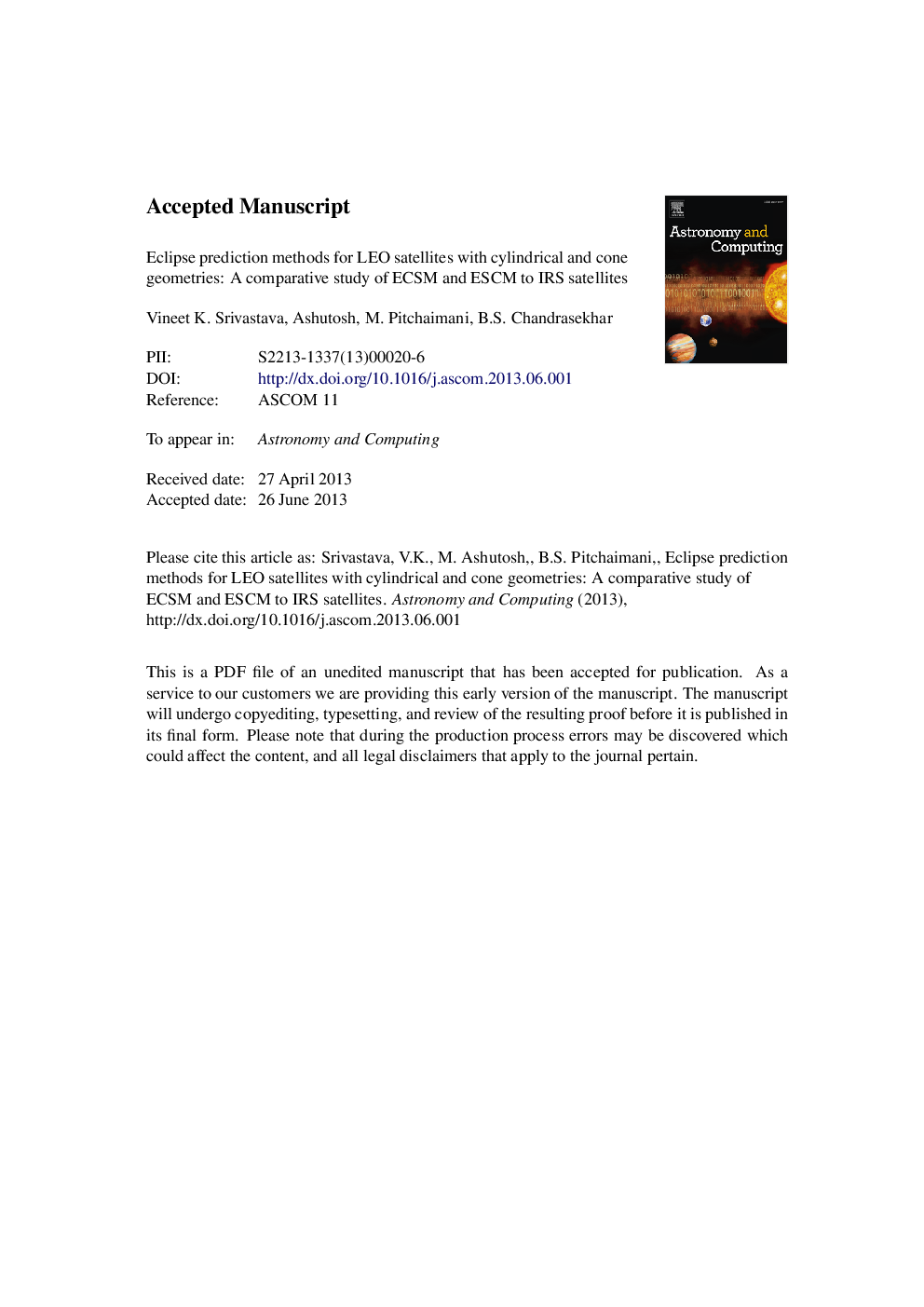| Article ID | Journal | Published Year | Pages | File Type |
|---|---|---|---|---|
| 6906233 | Astronomy and Computing | 2013 | 20 Pages |
Abstract
In the present work, we discuss and assess the performances of Earth cylindrical shadow model (ECSM) and Earth shadow conical model (ESCM), with application to the Indian Remote Sensing (IRS), Low Earth orbiting (LEO) satellites; Cartosat-2A, Meghatropics-1, Resourcesat-2 and Oceansat-2. Both models are very simple and efficient for the prediction of eclipse states of any Earth orbiting eclipsing satellite at a given epoch. The advantage of using ESCM over ECSM is that first one predicts both states of eclipse penumbra and umbra while the later one predicts only one which, in reality, is not true. The ESCM model can be effectively useful for the precise orbit prediction and satellite operation to utilize the power properly.
Related Topics
Physical Sciences and Engineering
Computer Science
Computer Science Applications
Authors
Vineet K. Srivastava, Ashutosh Ashutosh, M. Pitchaimani, B.S. Chandrasekhar,
